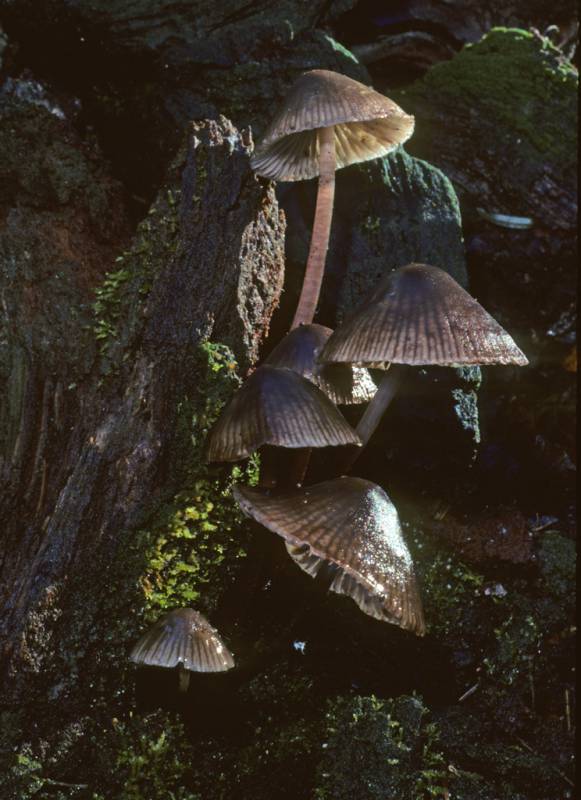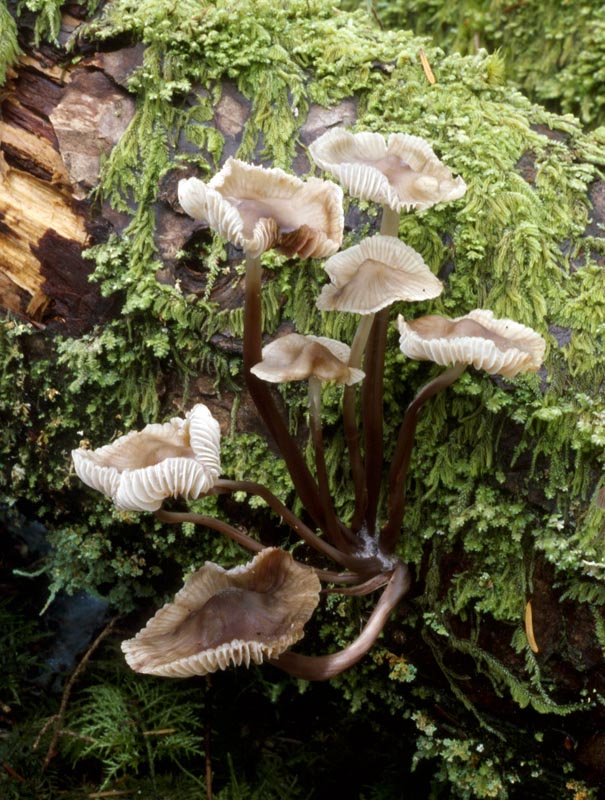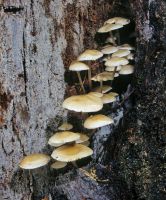Distribution: M. maculata grows in groups or clusters on wood of both hardwoods and conifers in North America and Europe, mostly on conifers in the PNW.
Spores: spores are ellipsoid, 7--10 x 4--6 µm, and, although not conspicuous, the cheilocystidia are of varied shape and often bear projections
Conservation Status: Not of concern
Mycena maculata is characterized by its conic or bell-shaped to convex, smooth to greasy caps, which are blackish brown to dark brown when young, then fade to brownish gray, usually retaining an umbo, often wrinkled or slightly grooved and with reddish brown spots in age or after being cut or bruised. The gills are whitish to pale gray, spotted or almost wholly reddish in age, and the stipe is long and fairly stout, sometimes with a rooting base when growing in soft well rotted wood, its base densely covered with long coarse whitish hairs and staining reddish in age. Unfortunately for identifiers, the staining of the fruitbodies does not always develop.
In the absence of the reddish spotting, M. maculata is almost indistinguishable macroscopically from M. galericulata, which also grows in groups or clusters on wood, but has somewhat larger spores (8--12 x 5.5--9 µm).
PNW Herbaria: Specimen records of Mycena maculata in the Consortium of Pacific Northwest Herbaria database
CalPhotos: Mycena maculata photos






